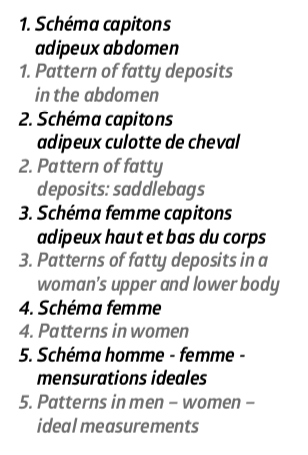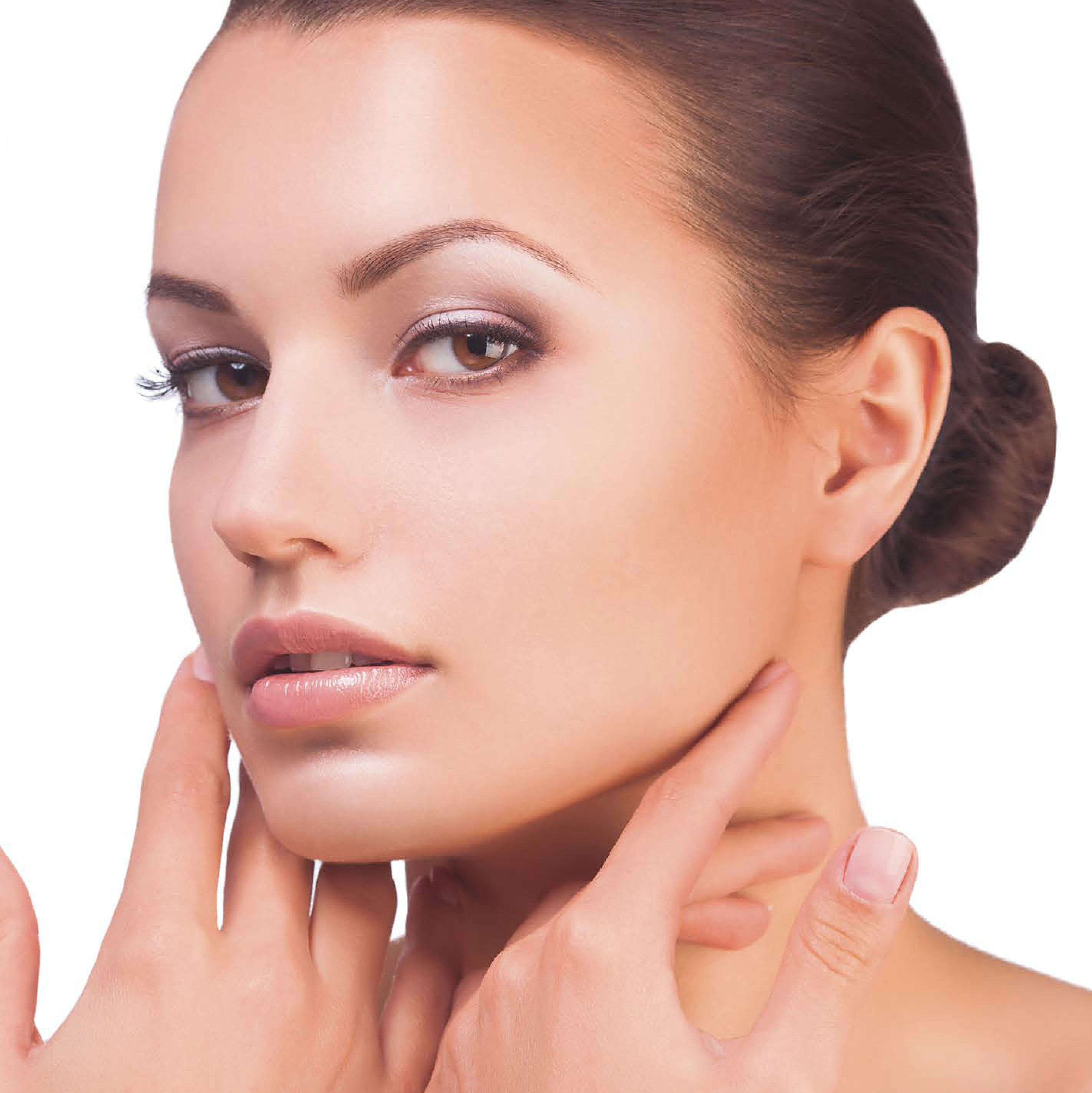In 1973, Professor Boris Klotz and Marcel Perrault – two big names in dietetics – published a book with the provocative title “Cursed carbohydrates”. In their introduction, they wrote, “Though the excess absorption of fats has long been considered the determining factor in the mechanism of obesity, our attention is gradually turning towards carbohydrates (or sugars).”
This gave me a lot to think about. Not only about why and how we gain weight, but also, and above all, how we can eliminate localised deposits of adipose tissue. How can we slim down these stubborn areas ?
Using medicine alone and excluding all surgical procedures, in particular liposuction.
As we can see in the diagrams below, there is not really any excess weight, but rather lumpy deposits of fat in the upper body and shoulders (a “bison hump”, as it looks like this animal’s characteristic body shape). We also see localised fat deposits in the abdomen and upper thighs (called “saddlebags”) and deposits of fat on the hips and upper thighs, known as “violin hips”.


All of these definitions are very evocative to both women and doctors, who have thought hard about ways to eliminate these fat stores through diet and medicine.
I have managed to solve a real medical equation by first understanding why the tissue is stored here in particular, as opposed to in other places, and understanding what type of fat it is and how we can mobilise and move it. Because this adipose tissue is alive, there must be a way of getting rid of it.
Let’s take a step back to understand what makes up this adipose tissue.
There are four different types of fat in our body:
• Thermal fat that protects us from heat and cold. It repre sents 2 to 3 kg at most.
• Sexual fat, which makes our body look feminine or masculine: our “sexy curves”. This fat attracts attention and is essential to the body. This fat represents 3 to 5 kg, but you can have too much of a good thing!
• Stored fat, which is fat connected with excess carbohydrate intake and is linked with insulin resistance. This fat is spread all over the body. It is responsible for the largest proportion of excess weight, up to 10 kg or even more. We can get rid of this fat fairly easily by drastically reducing our carbohydrate intake, as the professors mentioned in my introduction said. This is the battle against carbohydrates, or “cursed sugars”.
• Finally, there is toxic fat, and this is the fat I want to help you eliminate.
 Yes, but how?
Yes, but how?
First, we have to understand what is happening and how this particular adipose tissue is stored. It happens when we consume excess carbohydrates (or sugars) and, simultaneously, excess junk food (excess additives, flavour enhancers, colourants, carbonated foods and toxins). These are toxins, in other words toxic substances, and they can kill us if the liver does not perform its role of detoxifier.
So what happens? When faced with this excess of toxins, the liver breaks the carbohydrates down into fatty tissue. This is a straightforward biochemical reaction for the liver and the aim is to neutralise these toxic substances. The adipose tissue coats these toxins, which is what we called a “sweet wrapper effect” because the toxins are coated by the adipose tissue, a bit like a wrapped sweet. This toxic fat is then transported by biological substrates, which act like “biological wheelbarrows”, to our energy stores or, more specifically, our fat stores. These areas are characterised by their large stock of adipocytes (cells that store fat and our energy reserves). These areas are in the neck, buttocks, belly, knees, etc.
These are the characteristic areas that store “bad” fats, i.e. toxic fats.
So now we are getting to the crux of the matter: how to get rid of this fat and slim the body, whether it is male or female.
It is relatively simple:
• I prescribe a diet low in carbohydrates (or sugars), around 30 grammes, combined with very healthy foods, no toxins, smoking or alcohol. After a few weeks of being deprived of carbohydrates and toxins, the body is forced to produce its own sugars. The only thing it can do at this point is break into the cells that have become engorged with fat under the influence of excess insulin, which is secreted when faced with excess sugar. Since this sugar is absent, the cell wall gives way and the fat is released along with the toxic waste. These are broken down into free fatty acids that are burnt off in part by our muscles, which are efficient machines for breaking down and eliminating waste and toxins. The muscles are a very useful kind of biological dustbin, which proves how important physical exercise is for getting rid of excess weight as well as these toxic fats.
The liver is also involved in detoxification when these toxin-charged fatty acids are broken down into ketonic bodies to supply the cells with energy. The liver destroys these toxins thanks to its detoxification capabilities and, because the body is not taking in any more toxins, the liver has the time and energy to detoxify the body properly.
• In addition to this special diet, I recommend taking natural products that promote and support the hepatic detoxification process.
• As I have always extolled using pressure therapy, I like to combine all of these medical services for better results. My patients are delighted with the quality of this tailored slimming process, which succeeds where other methods fail.
I hope that my explanations have convinced you that, nowadays, it is possible to slim down stubborn areas of fat without surgery or liposuction.
 By the doctor Claude Chauchard
By the doctor Claude Chauchard
A renowned specialist in nutrition, weight control and medicine for preventing aging. More than a million copies of 14 books sold in more than 5 languages. Founder of the anti-aging clinic concept La Clinique De Paris, established in China, Taiwan, Japan and Korea since 1992. Assistant professor at the universities of SEOUL and PEKING. Creator of the online Chrono Géno Nutrition method.
More information on lcdpi.net
Fore more information:
Read my latest book: “Slim down those stubborn areas” published by Editions Tredaniel (in French).












